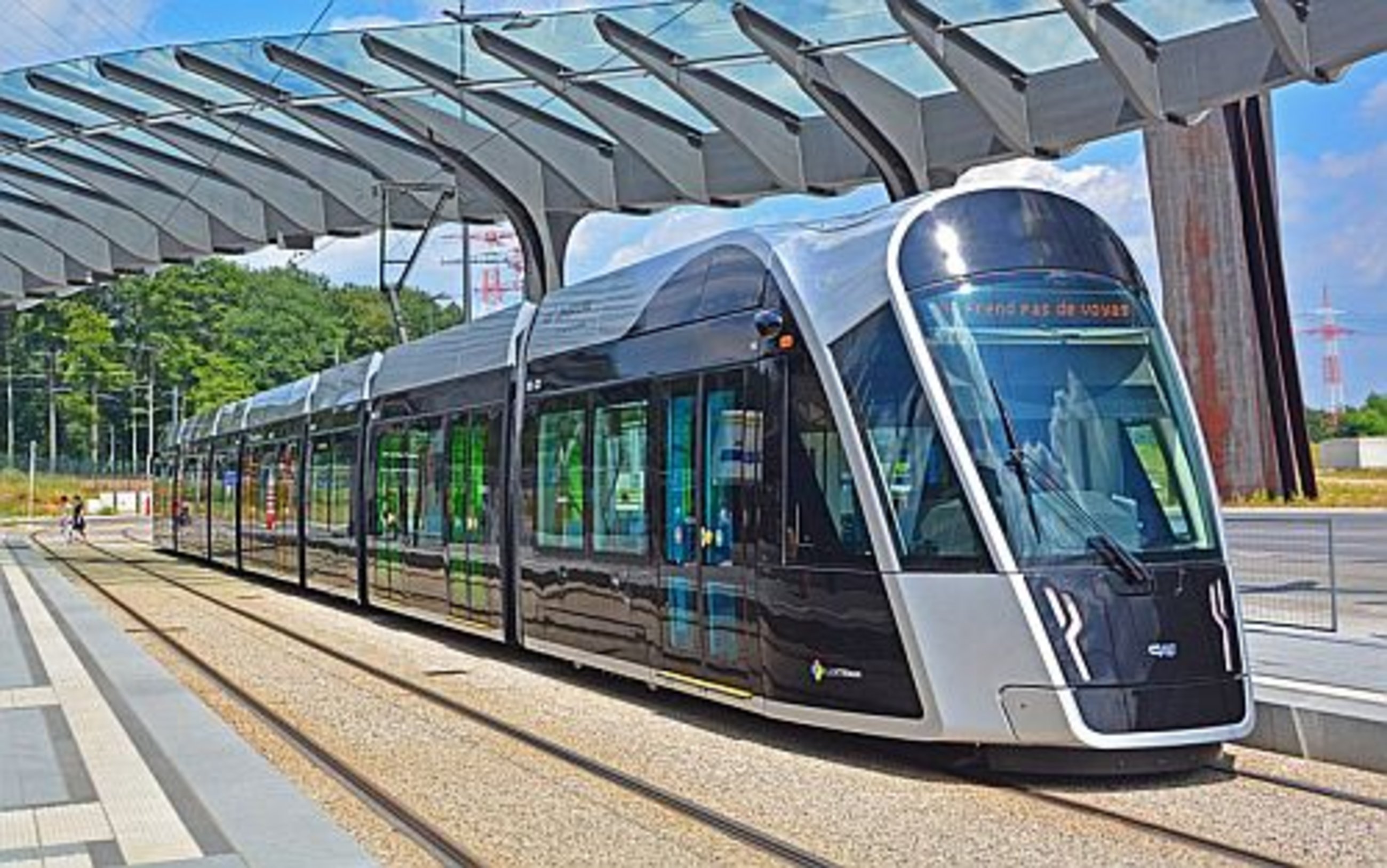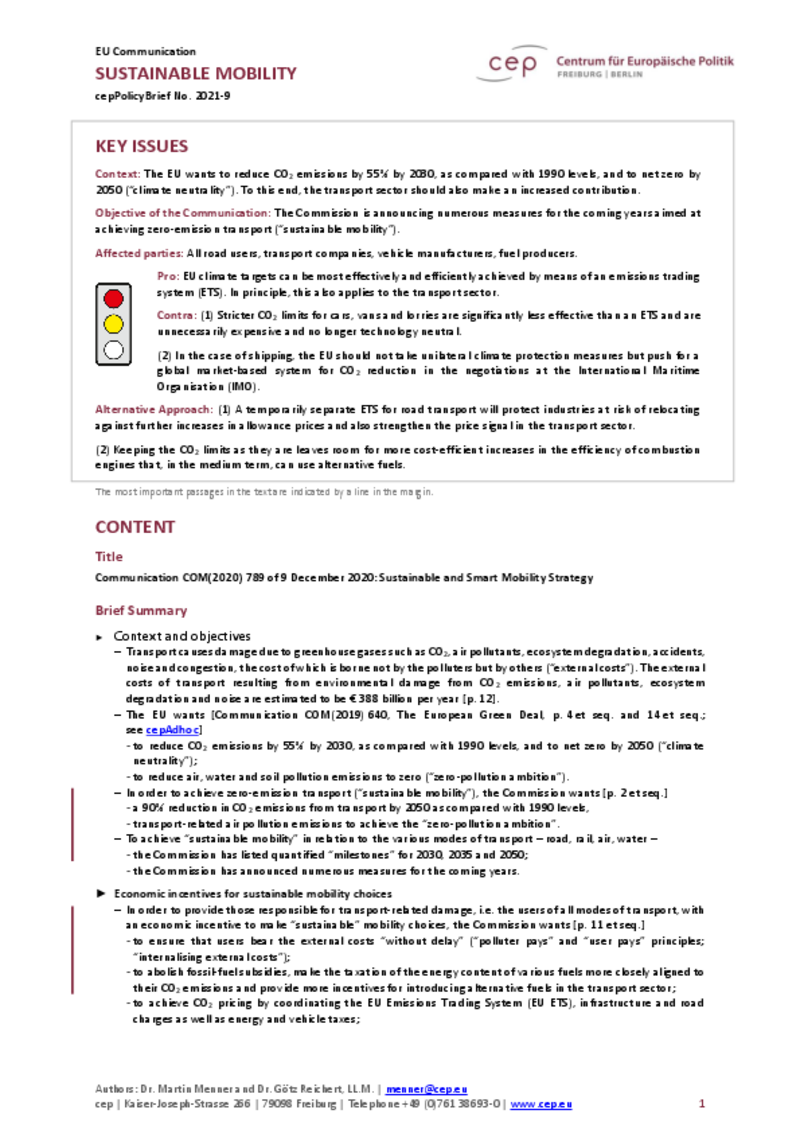
Transport
Sustainable Mobility (cepPolicyBrief COM2020_789)
cepPolicyBrief
"The EU climate targets can be achieved most effectively and efficiently through an emissions trading system," says cep expert Martin Menner, who assessed the EU strategy in a cepPolicyBrief. "This also applies in principle to the transport sector. However, an ETS should then also become the main instrument for CO2 reduction in road transport," emphasises the Freiburg scientist.
According to Menner, a transitional separate ETS for road transport would protect industries threatened with relocation from additionally rising allowance prices in the EU ETS and even strengthen the price signal for the transport sector. "Further tightened CO2 limits for cars, vans and trucks, on the other hand, are much less targeted than an ETS, unnecessarily expensive and no longer technology-neutral," warns the cep expert.
For aviation, Menner is critical of a reduction in the number of allowances allocated for free. "This does not increase the incentive effects in the EU ETS, but leads to competitive disadvantages for airlines with hubs in the EU," says Menner.
The transport sector is responsible for about a quarter of the EU's CO2 emissions.
Download PDF
| cepAnalyse (publ. 05.18.2021) | 308 KB | Download | |
 | |||


